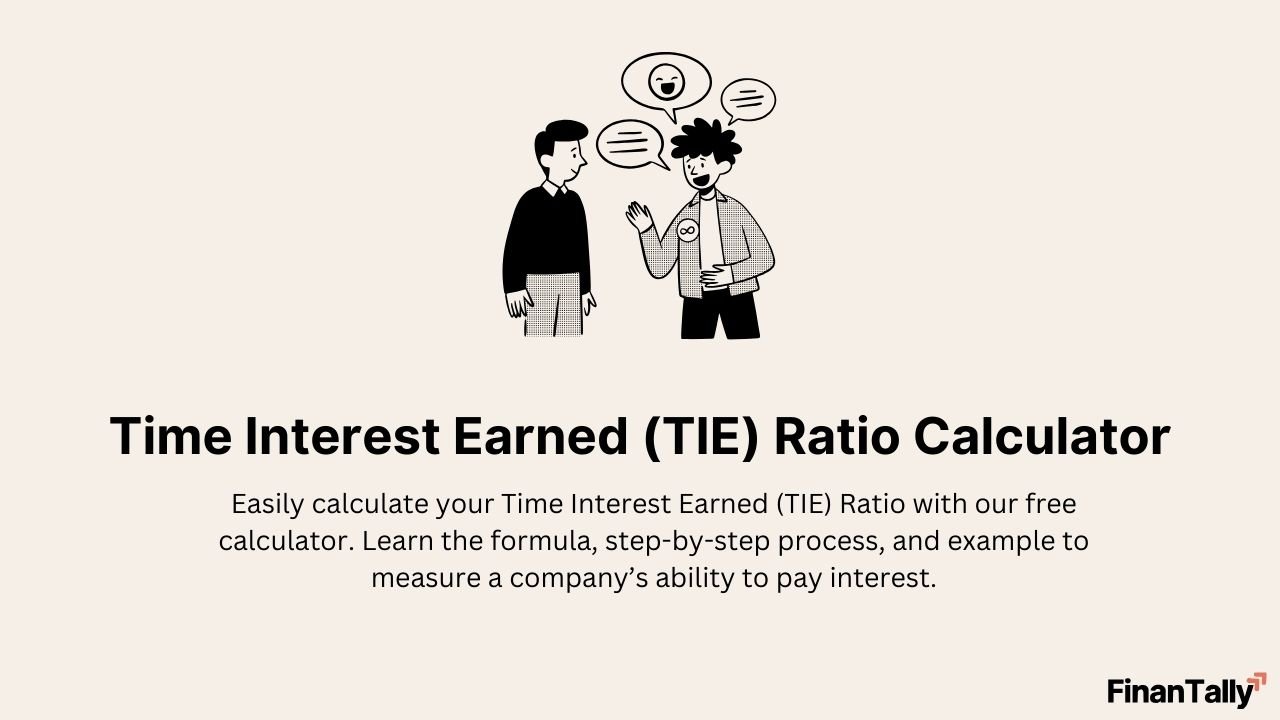Time Interest Earned (TIE) Ratio Calculator
Easily calculate your Time Interest Earned (TIE) Ratio with our free calculator. Learn the formula, step-by-step process, and example to measure a company’s ability to pay interest.
Time Interest Earned (TIE) Ratio
10.00x
Excellent: Company can easily cover interest payments 10 times over
TIE Ratio Risk Assessment
< 1.5x
High Risk
1.5x - 2.5x
Moderate Risk
2.5x - 4x
Low Risk
> 4x
Excellent
The Time Interest Earned (TIE) Ratio, also called the Interest Coverage Ratio, is a financial metric that shows how easily a company can meet its interest obligations from its operating income. A higher ratio means the company has more earnings available to cover interest expenses, indicating financial stability.
Our Time Interest Earned Ratio Calculator helps you quickly determine this ratio by entering just two values: Earnings Before Interest and Taxes (EBIT) and Interest Expense.
Formula for Time Interest Earned (TIE) Ratio
The basic formula is:
Step 1: Calculate EBIT
EBIT stands for Earnings Before Interest and Taxes. It is the company’s operating profit before financial costs are deducted.
Step 2: Identify Interest Expense
Interest Expense is the total cost a company pays on its borrowed funds (loans, bonds, etc.).
No special calculation is needed—this value comes directly from the company’s financial statements.
Step 3: Calculate TIE Ratio
Now, divide EBIT by Interest Expense:
Example Calculation
Suppose a company has:
- EBIT = $200,000
- Interest Expense = $50,000
This means the company earns 4 times its interest expense, which shows a comfortable financial position.
Why Is the TIE Ratio Important?
- High Ratio (e.g., 5 or more): Strong ability to pay interest, low financial risk.
- Low Ratio (e.g., below 2): Company may struggle to pay interest, higher risk of default.
- Balanced Ratio: Depends on the industry; capital-intensive industries may have lower ratios.

Related Calculators
Help Improve This Tool
Your suggestions help us make better tools for everyone.